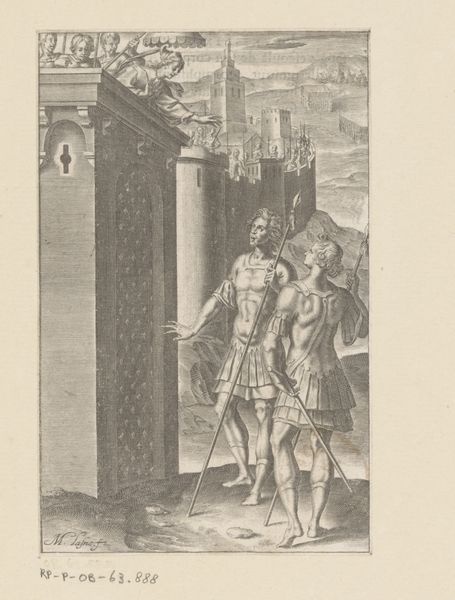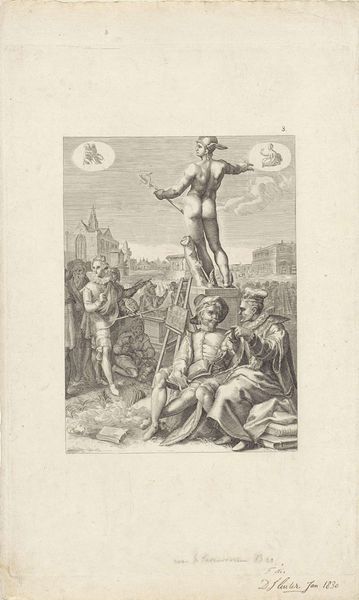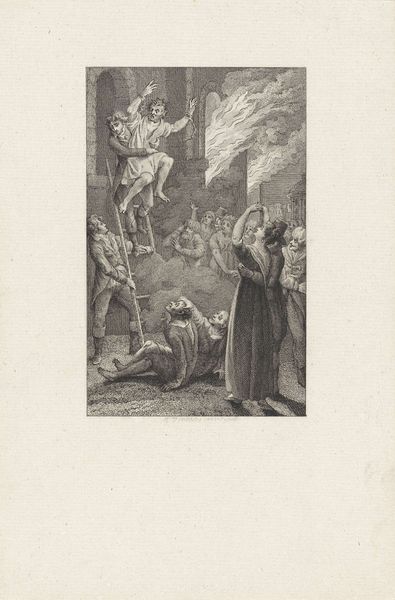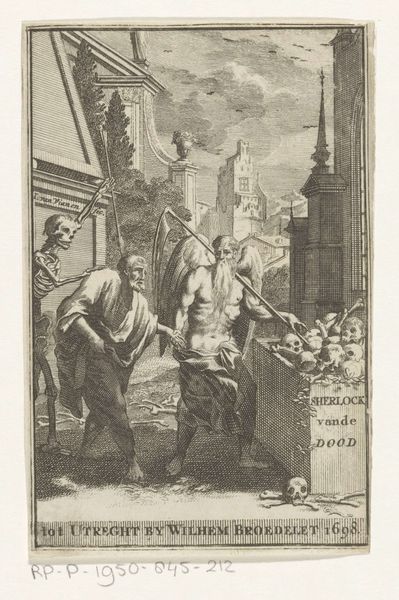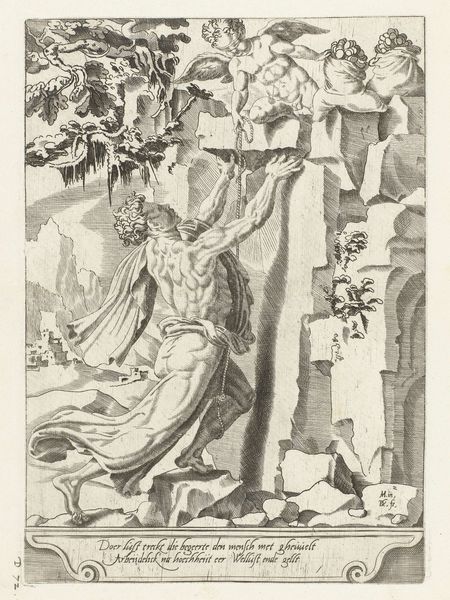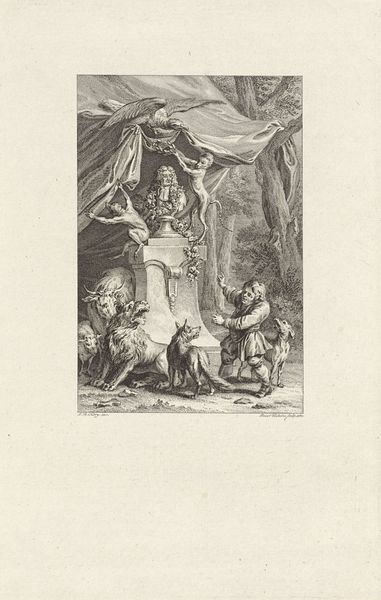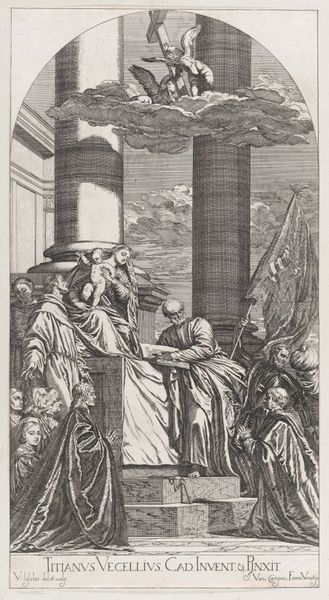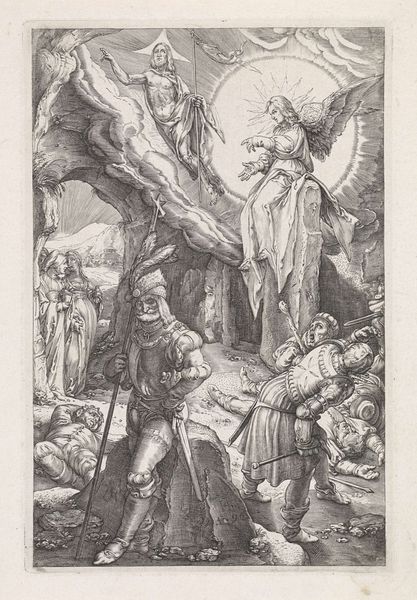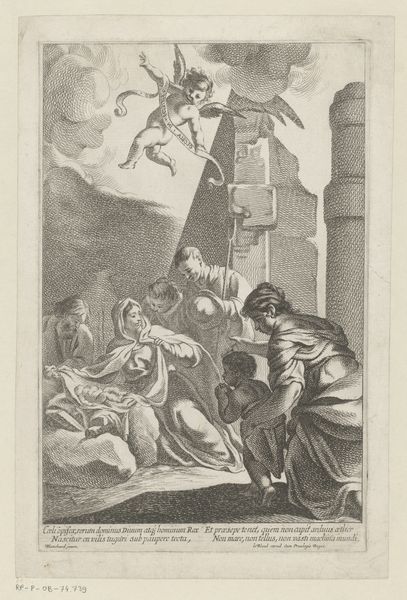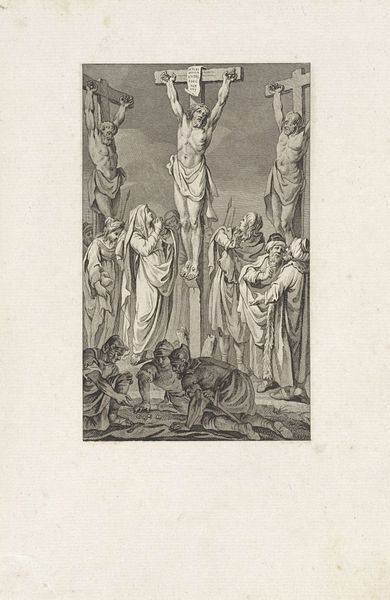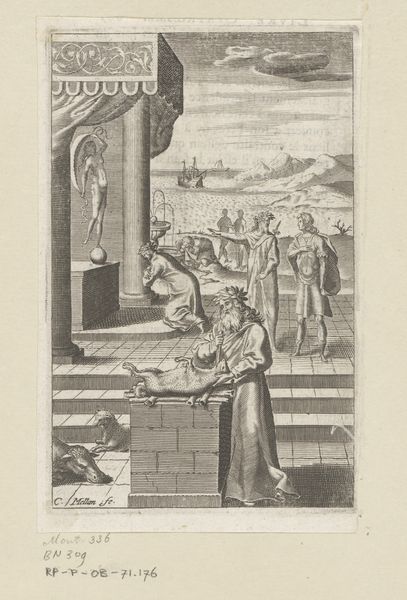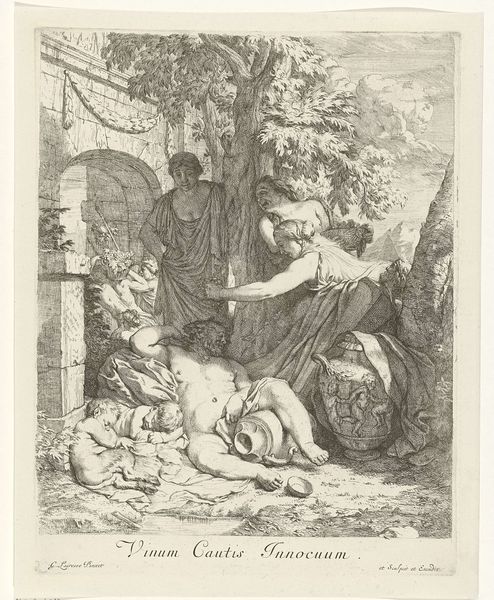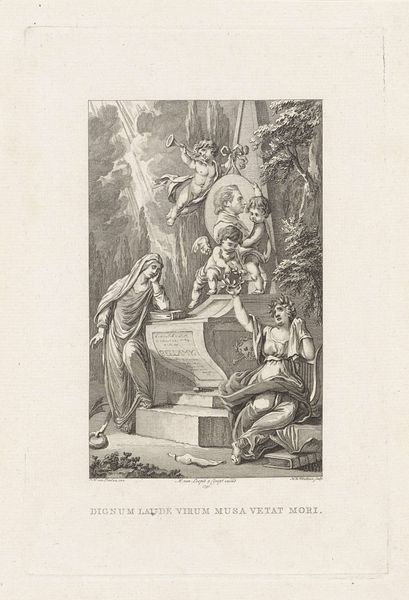
engraving
#
neoclacissism
#
narrative-art
#
greek-and-roman-art
#
old engraving style
#
figuration
#
history-painting
#
engraving
Dimensions: height 208 mm, width 134 mm
Copyright: Rijks Museum: Open Domain
Ludwig Gottlieb Portman created this print, “Marius Retreats to Praeneste,” sometime around the late 18th to early 19th century using etching. It illustrates a scene from Roman history. Prints like this one were very popular at the time. They were used to circulate classical stories that often served as moral lessons. But they also functioned as a form of cultural capital. Knowledge of the classics signaled one’s place in the upper echelons of society. Look at the way the artist renders Marius’s body. It's idealized, athletic, and masculine. These were all qualities admired in Roman leaders and, by extension, in the men who collected such prints. Consider how the story of Marius, a military leader in retreat, might have resonated with viewers during a period of political upheaval and war in Europe. The image captures a moment of vulnerability and strategic withdrawal. It invites us to consider the complexities of leadership, and the fine line between courage and defeat.
Comments
No comments
Be the first to comment and join the conversation on the ultimate creative platform.
